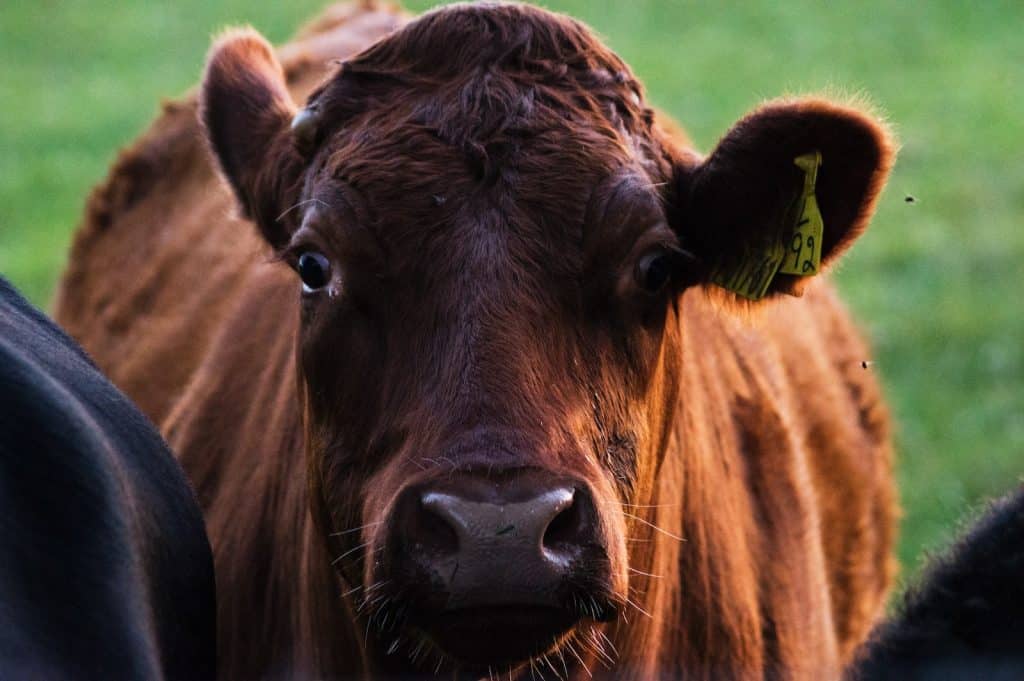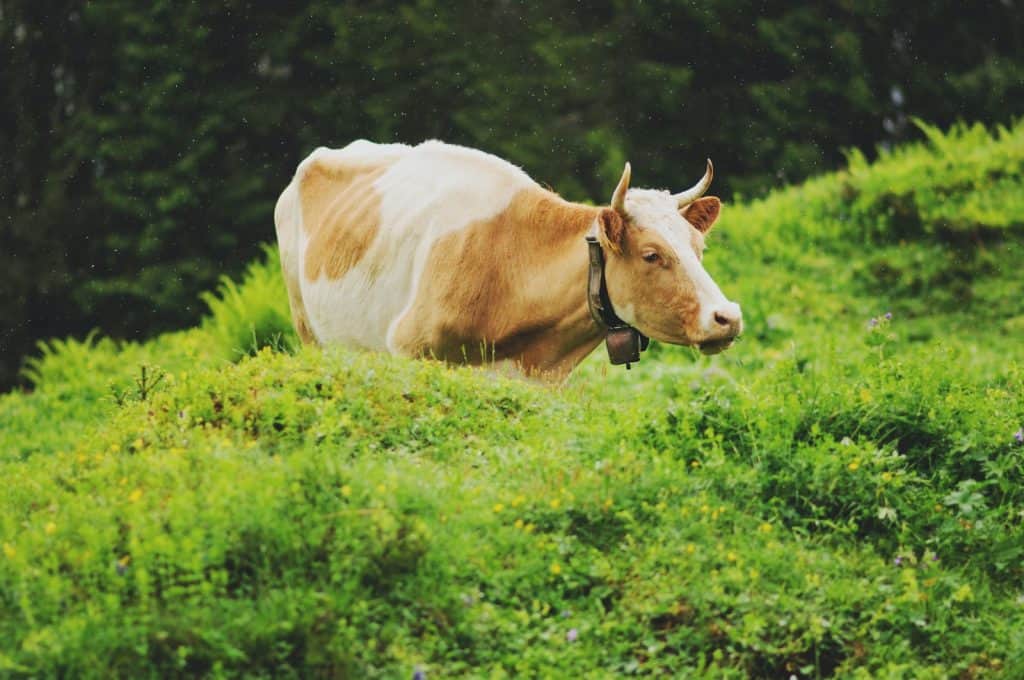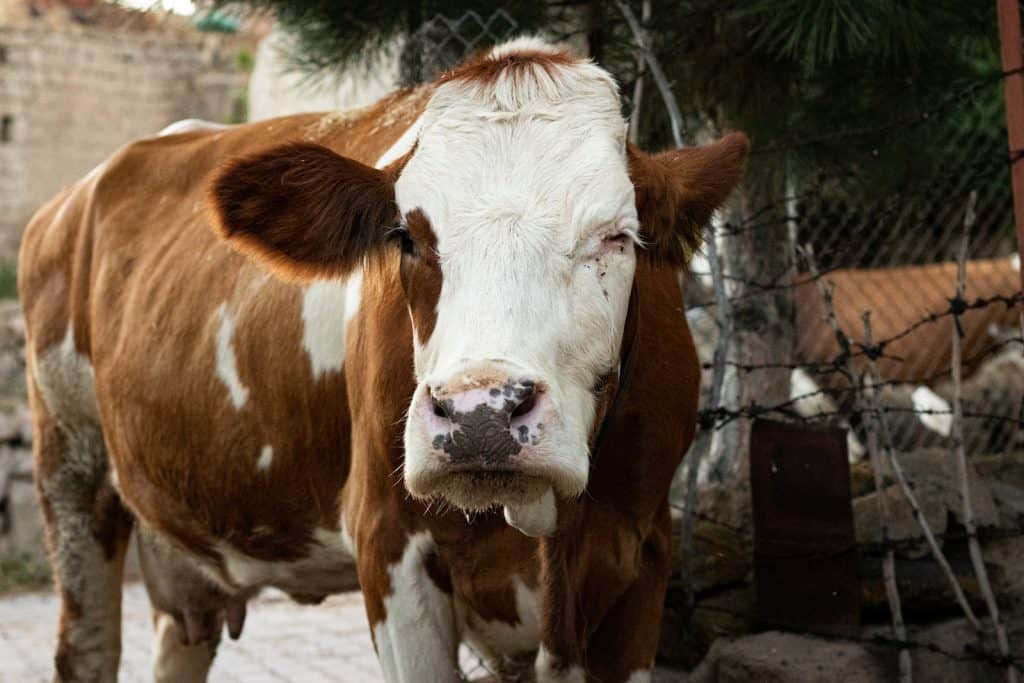
Sahiwal cattle, which are named after an area of Pakistan, is a heat-tolerant Zebu cows. Because they are resistant to heat and parasites, this cattle breed can be raised in warmer climates. Sahiwal cattle can be docile and easy to work with. This makes them ideal for slow farm work.
Sahiwal cattle are a combination of a highly heat-tolerant and easy-going temperament. They also have an attractive appearance. This article will provide all the details you need about this remarkable breed of cattle.
Here are some quick facts about Sahiwal Cattle

| Breed Name: | Sahiwal |
| Where is it from? | India and Pakistan |
| Uses: | Dual-purpose |
| Bull (Male Size): | 800-1100 pounds |
| Cow (Female Size): | 940-1300 pounds |
| Color: | Reddish-brown |
| Lifespan: | 20 years |
| Climate Tolerance: | Warm climates |
| Care Level | Simple |
| Production: | Milk and meat |
Sahiwal Cattle Origins
Sahiwal is a breed of cattle that comes from Punjab, a dry region near the Pakistani and Indian borders. Professional herdsmen used to keep large numbers of them in this area. The introduction of irrigation systems allowed Sahiwal cattle to be kept in smaller numbers by the farmers who lived in the region. They were used primarily for dairy and draft cattle.
Sahiwal is today one of the most popular dairy breeds in Pakistan. These cattle are drought-resistant and produce excellent milk. Farmers began to export them to Asia, Africa, and some parts of the Caribbean.
They were first exported to Australia in the 1950s. In Australia, Sahiwal was primarily chosen to be a dual-purpose breed. They were an integral part of the development and production of two Australian tropical dairy strains.
Many characteristics make Sahiwal cattle ideal for farmers around the world. Sahiwal cattle are known for their ability to tolerate heat and ticks. Farmers can keep their herds of Sahiwal cattle in many different climates and farming environments. Sahiwal cattle can be raised wild without the need for parasite treatment. The herd is also less likely to be destroyed by parasite invasions.
Sahiwal cattle are a great choice for dairy farmers because of their high milk yield. They are among the most prolific Zebu cattle breeds in terms of milk production and have a strong udder. Sahiwal cattle are well known for their ease in calving and ability to produce healthy calves.

Uses
Sahiwal cattle can be used for both beef and milk production. Sahiwal cattle in India are also used for drafting. Because of their high milk yield, lean meat, and even fat coverage, the Sahiwal cattle breed is a valuable asset to both the meat and milk industries.
Appearance and Varieties
Sahiwal cattle come in a variety of colors. They can be reddish-brown or predominantly red, with different amounts of white underlined and on the neck. The color of males darkens towards their neck, head, and tail. The average bull is between 800-1,100 and 1,300 pounds. Cows weigh between 900 to 1,300 pounds. Bulls and cows both have horns that protrude from their heads, but it is more prominent in bulls.
The prominent thoracic hump of male Sahiwal cattle makes them appear taller than their female counterparts. The cows’ udders are well-developed and have uneven teats. Both the male and female Sahiwal cattle are distinguished by their long, droopy ears.
Distribution & Habitat
Sahiwal cattle are bred mostly in Pakistan for their exceptional milking capabilities, and in Australia because of their beefing qualities. They were the primary livestock in Pakistan for the past century. Sahiwal cattle are widely cultivated in many areas, in different climates. They have been praised for their exceptional working abilities and dual purpose in the meat and dairy industries.
Is Sahiwal Cattle good for small-scale farming?
Sahiwal cattle can be used for small- and large-scale farming. Sahiwal cattle are easy to care for and meet all dietary needs. They also have a gentle nature that makes them ideal for light farm work, such as beef production and milk production. This cattle breed is able to adapt to a wide range of climates and conditions.
What distinguishes the Sahiwal cow?
The Sahiwal is a top dairy breed in India and Pakistan. It is tick-resistant, heat-tolerant, and has a great tolerance to both internal and external parasites. During lactation, cows produce an average of 2270 kg of milk when nursing a calf, however significantly greater milk production has been observed.
Which cow produces the most milk?
Sahiwal, Gir, Rathi, Tharparkar, and Red Sindhi are the top milking cow breeds in India.
Which cow produces 50 liters of milk?
A Gir cow may produce up to 50 liters of milk.
What is the most common dairy cow?
The Holstein (or Holstein-Friesian) is the most common dairy breed, accounting for around 90% of cows on dairy farms in the United States.
Which milk is better, A1 or A2?
A2 milk, on the other hand, promotes improved immunity. Consuming A1 milk may harm the immune system and contribute to type 1 diabetes or heart disease, according to research. The benefits of A2 milk greatly exceed the hazards that A1 milk may pose to the human body.
Which cow produces the most milk?
The worldwide dairy business is currently dominated by Holstein Friesian cows. The Holstein-Friesian produces the most milk of any breed in the world. Coat with patches in black and white (occasionally red and white). Originally a dual-purpose breed, it was utilized for both dairy and meat production.
Which cow produces 100 liters of milk?
Sindhi red cow This cow is well-known throughout the nation for producing a lot of milk. This cow may also produce between 2000 and 3000 liters of milk each year.
What cow produces golden milk?
Because of their golden milk, French Gold Guernseys are known as The Royal Breed. The milk’s deep color is due to a high concentration of beta carotene, a source of vitamin A. Guernsey cows are British, although they are said to have descended from two French types. They arrived in the United States in the early 1900s.
Which type of animal milk is the best?
Sheep milk is now among the most nutritious milk in the world. Camel and buffalo milk are the only milk that may be compared in terms of nutritional content. Sheep milk has double the solid amount of cow or goat milk, making it ideal for creating cheese.
How many days does the Sahiwal cow supply milk?
According to KARI (Kawanda Agricultural Studies Institute) research, the breed is an excellent milk producer compared to other local breeds, it is capable of producing roughly 8-10kgs per day, with 4.5% fat content in the milk, over a period of 10 months.